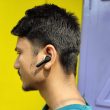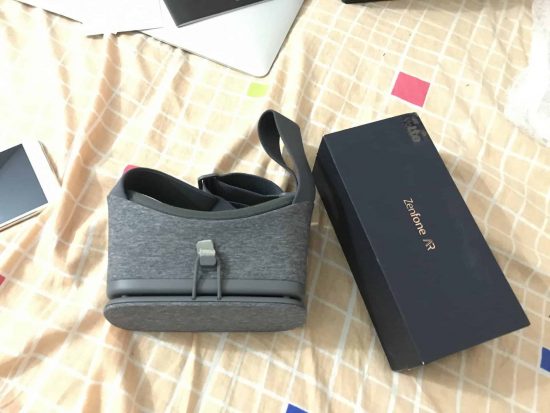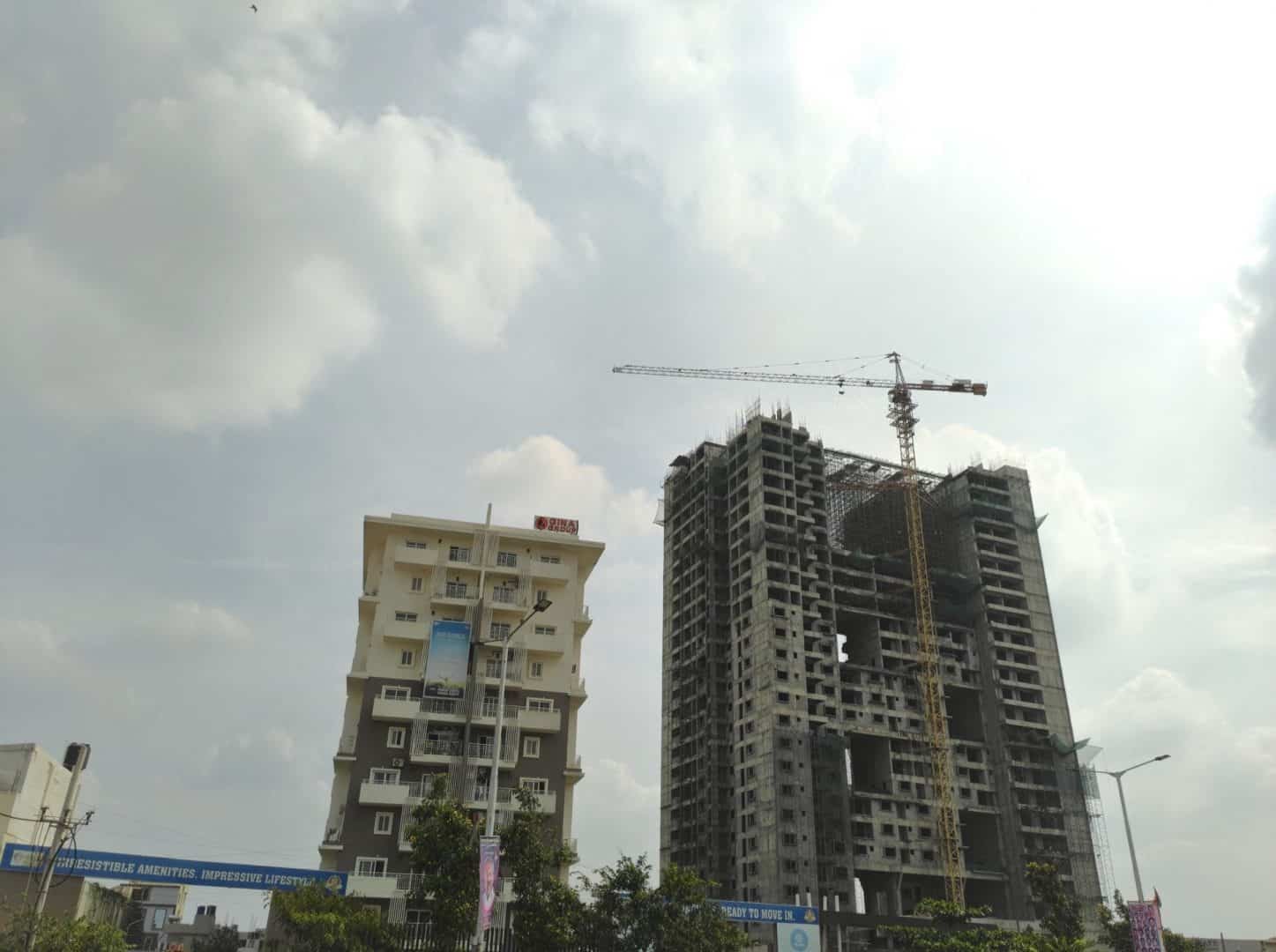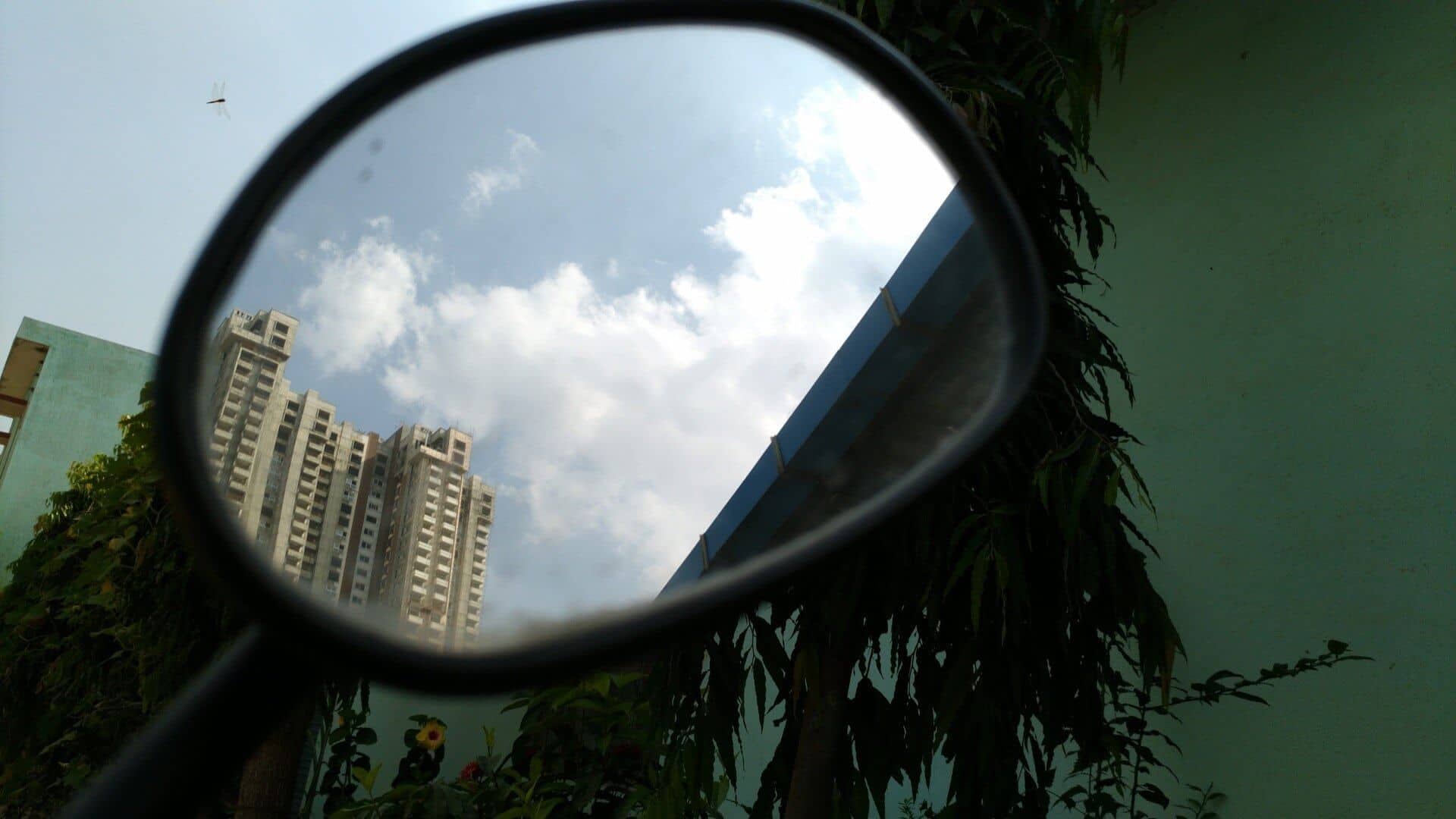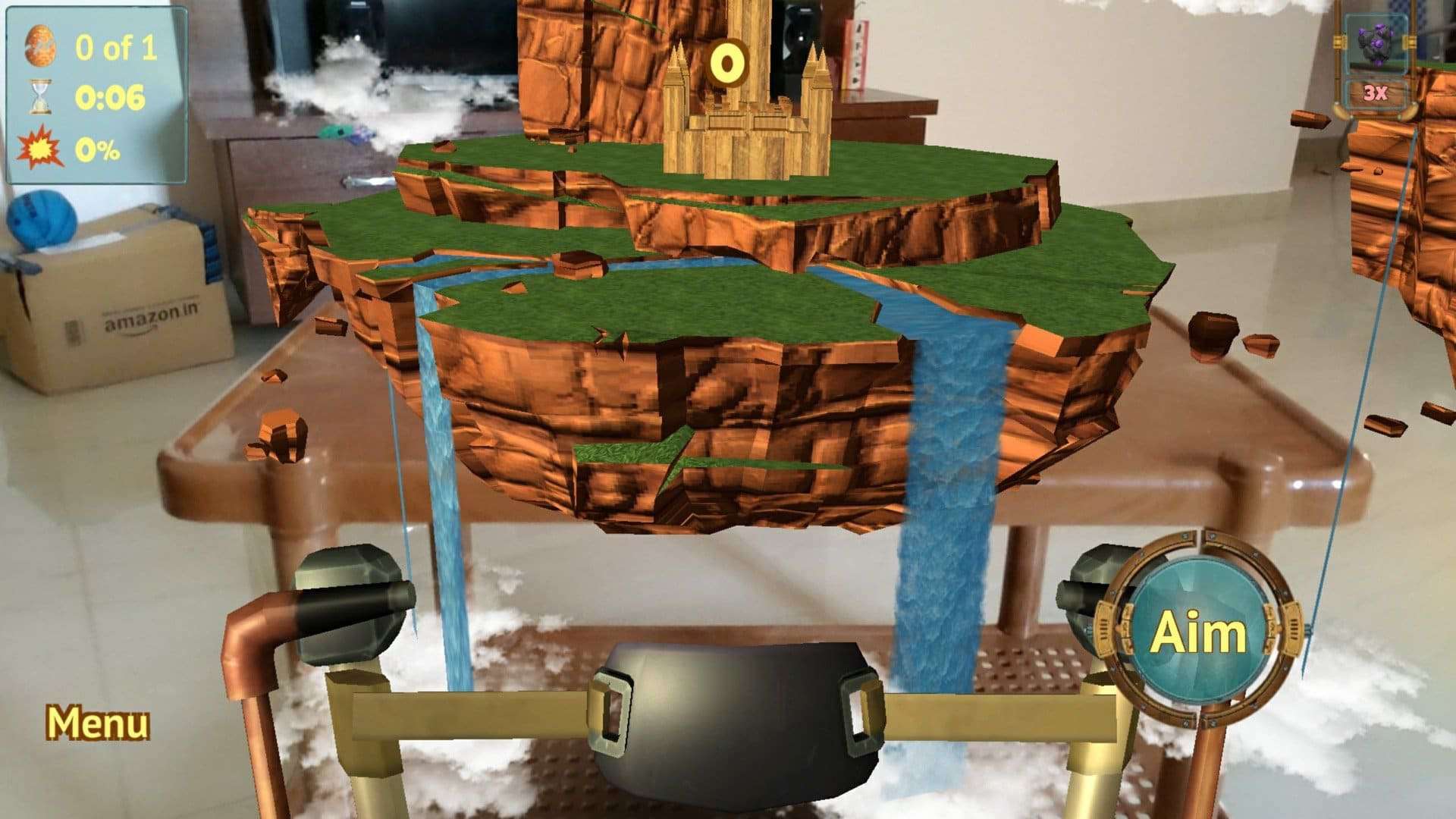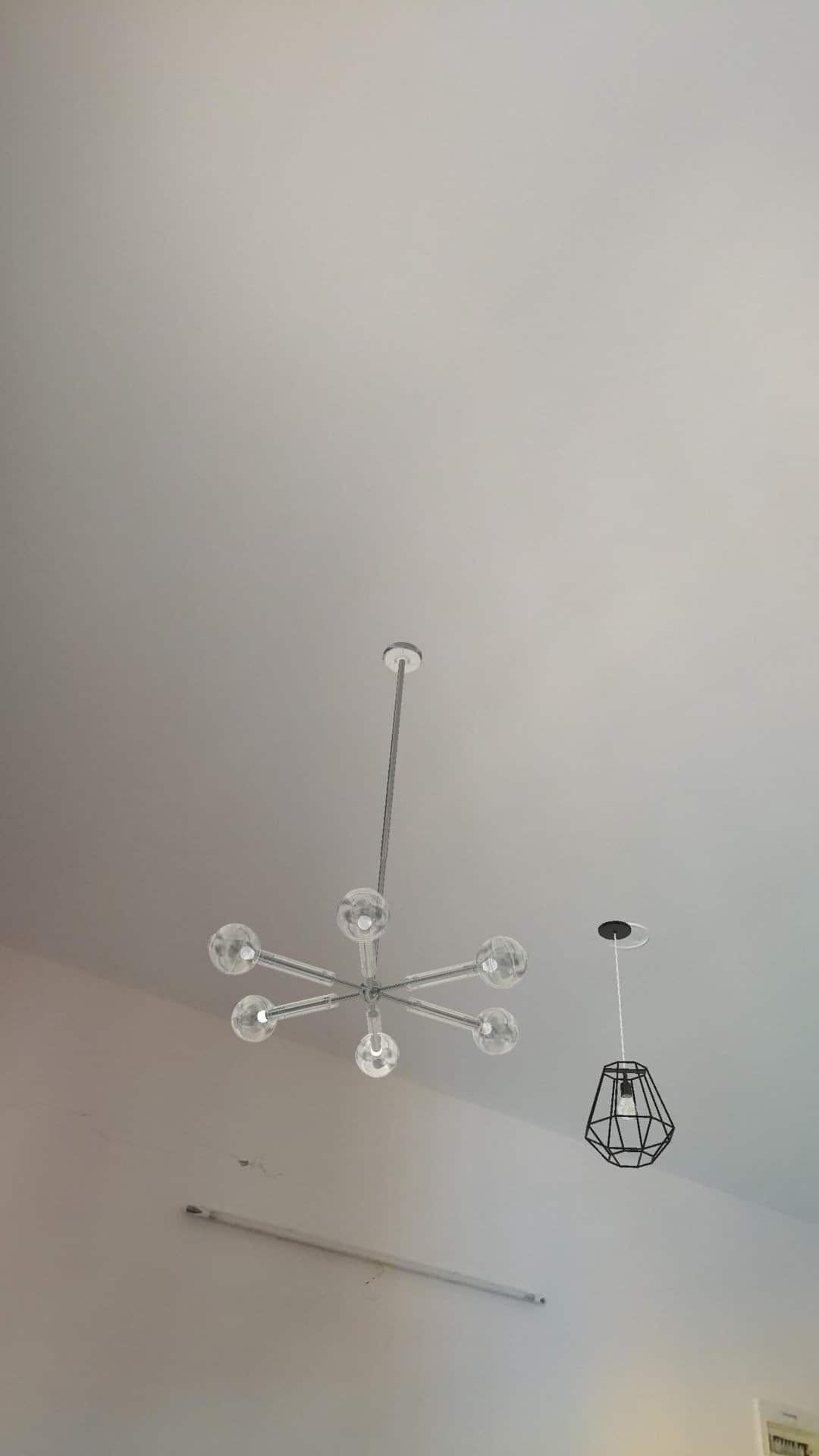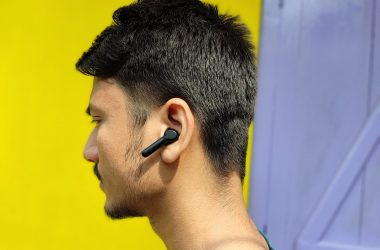Asus has been one of my favorite brands for many years, and the brand still surprises me with their unique smartphone strategy. Though they couldn’t cope with the rising Chinese brands like Xiaomi, Oppo, and Vivo, etc. but they have never failed in showing the innovation in their products. One such is the recently launched Asus Zenfone AR. Zenfone AR is the world’s first smartphone with a whopping 8GB RAM and is one of the very first Google’s Project Tango smartphone.
I’ve received the ZenFone AR review unit last week, and I was never excited like this before to try out a smartphone. Well, before we move further to the review, let me discuss a few details about the virtual reality and augmented reality, and how different they’re from each other. Both these cutting-edge technologies sound very similar but where they differ is the perception of our presence. The virtual reality is all about taking us to a different place, and this can be perceived through a VR headset whereas the augmented reality is about adding an extra layer [a computer simulation] to our real world which can be seen using a smartphone. In simple terms, this is how we can explain the VR and AR. But, in reality, there’s a lot of information you need to know which you can find here.
Let’s not get distracted with these technologies, as my point here is to do the zenfone AR review. So, within the flow, I will explain their applications too. Now let’s check out the specifications of ZenFone AR.
key specifications of ZenFone AR:
- 5.7′ Super AMOLED display
- 8GB RAM | 128GB ROM, Expandable up to 2TB with microSD card
- 2.35 GHz Qualcomm Snapdragon 821 quad-core processor
- Adreno 530 GPU
- Android 7.0 (Nougat)
- 23MP rear camera with depth and motion tracking sensors & an 8MP front camera
- 3,300mAh battery
- Project Tango Phone | Daydream VR support
The specs seem to be last year’s flagship right? Well, the Zenfone AR was unveiled in January this year. So, it still runs on Snapdragon 821 chipset. Anyhow, let’s get to the basics and start the zenfone AR review with the design.
Zenfone AR Review – Design & Build Quality:
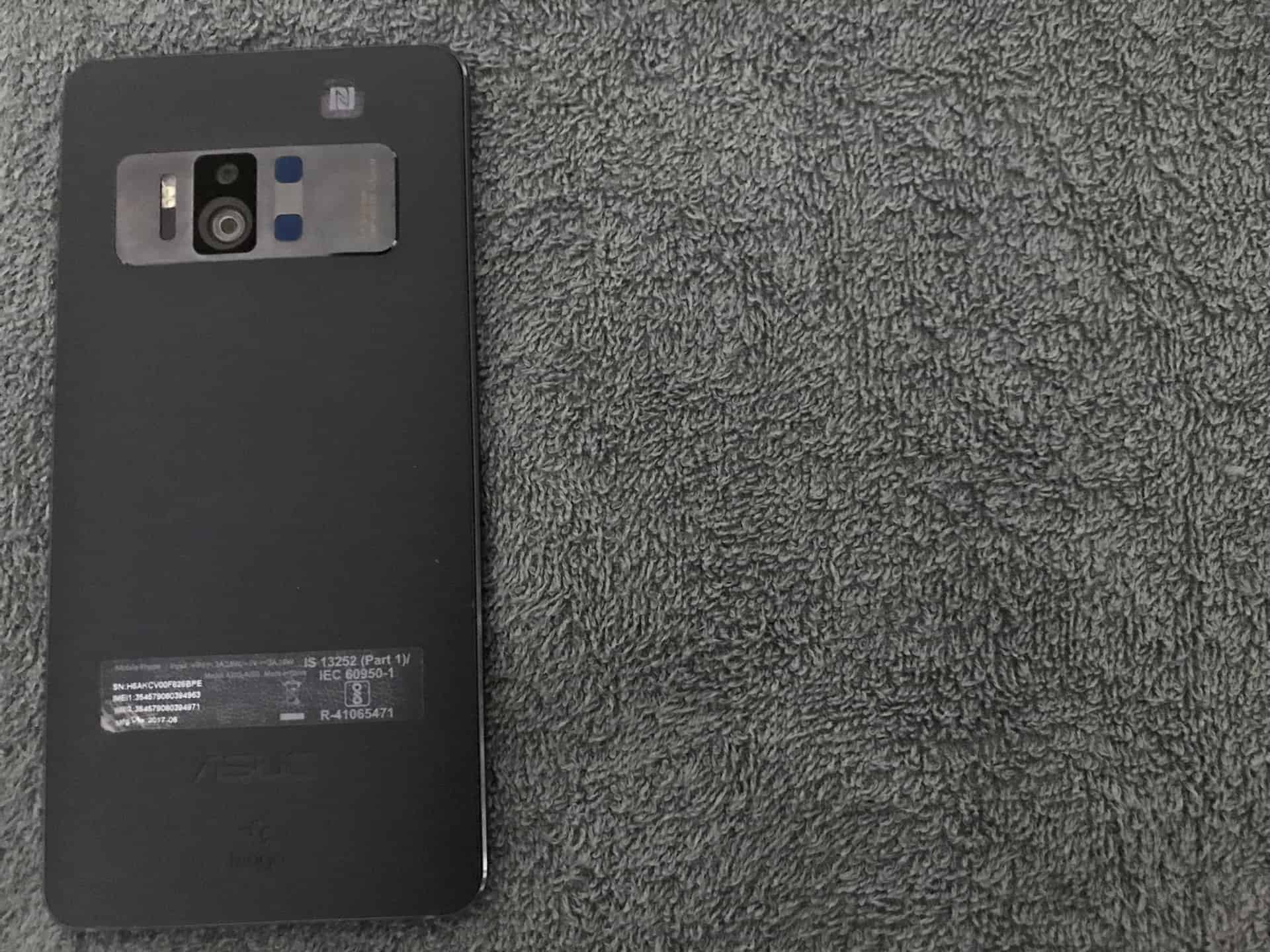 You would have noticed the design change from Zenfone 3 itself, and zenfone AR follows the same change but resembles zenfone zoom and OnePlus 2. The one biggest change I’ve noticed and really liked is the backlit keys. I’ve been pointing this out since my first review of Asus smartphones and seems this would be the starting for incorporating the backlit keys. The other change is the fingerprint reader on the home button. Maybe, this is the first time Asus ever did, but the button is not capacitive and is an actual button. You’ll get to home only by pressing it, and there’s no haptic feedback. If you’ve noticed the setup on the rear side, you’d understand the reason for moving the fingerprint scanner on the home button instead of keeping it below the camera. So, let’s check out what’s on the rear side.
You would have noticed the design change from Zenfone 3 itself, and zenfone AR follows the same change but resembles zenfone zoom and OnePlus 2. The one biggest change I’ve noticed and really liked is the backlit keys. I’ve been pointing this out since my first review of Asus smartphones and seems this would be the starting for incorporating the backlit keys. The other change is the fingerprint reader on the home button. Maybe, this is the first time Asus ever did, but the button is not capacitive and is an actual button. You’ll get to home only by pressing it, and there’s no haptic feedback. If you’ve noticed the setup on the rear side, you’d understand the reason for moving the fingerprint scanner on the home button instead of keeping it below the camera. So, let’s check out what’s on the rear side.
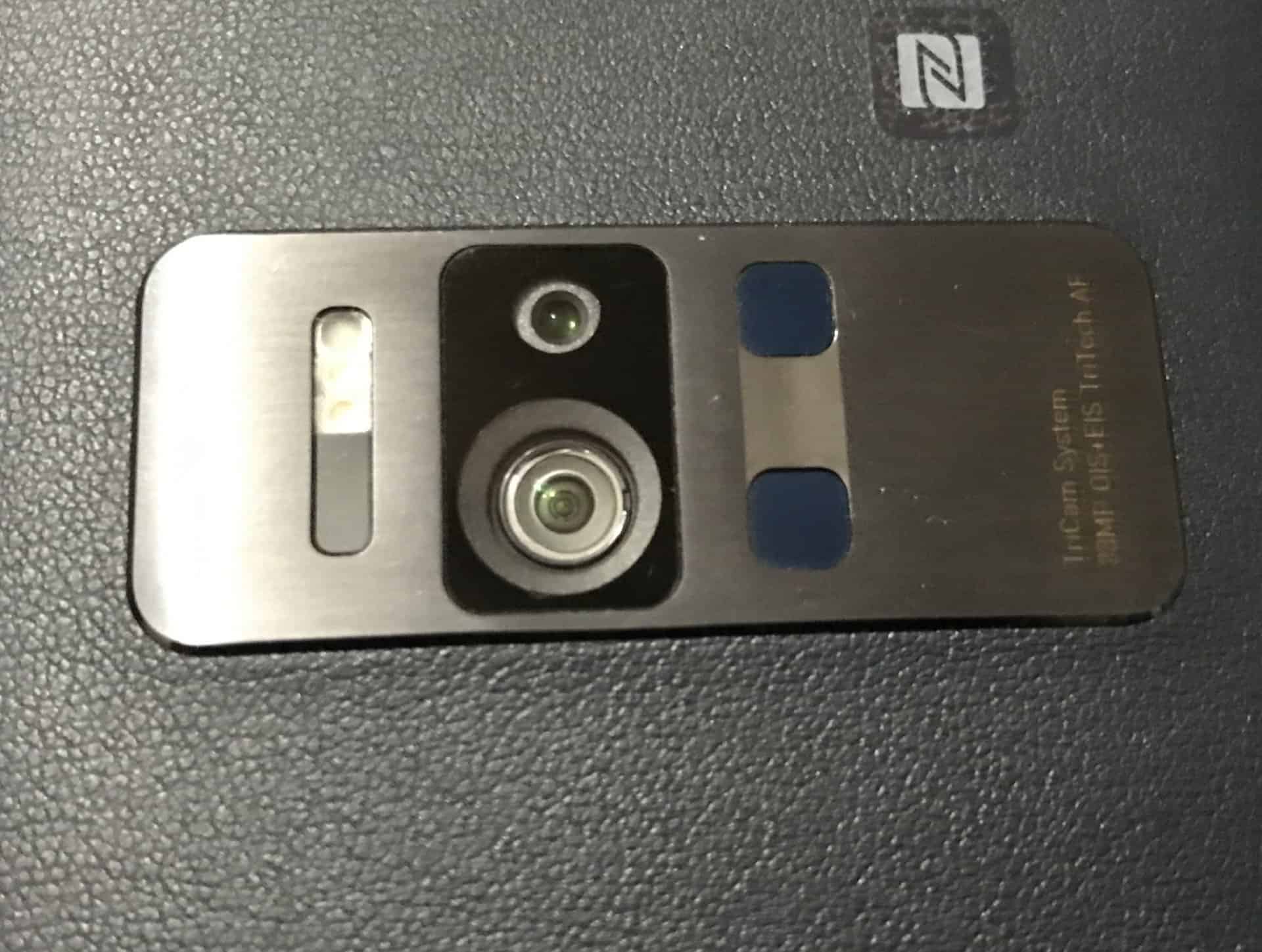
On the rear side, you can find the Asus Tricam system which is pretty minimalistic thereby reducing the footprint of the overall device. Out of the three cameras, the small one on the top is the main rear camera which is of 23MP f/2.0 with 4-axis optical image stabilization. The one below to that is the motion tracking camera which let the phone to determine its location as it moves through space. The one besides to these two is the depth-sensing camera with IR projector. This camera helps the phone to assess the distance from real-world objects. This tricam setup helps the phone to view the virtual objects in the real environment. The phone supports NFC as it is a required feature to transfer the data when connected to Daydream VR.
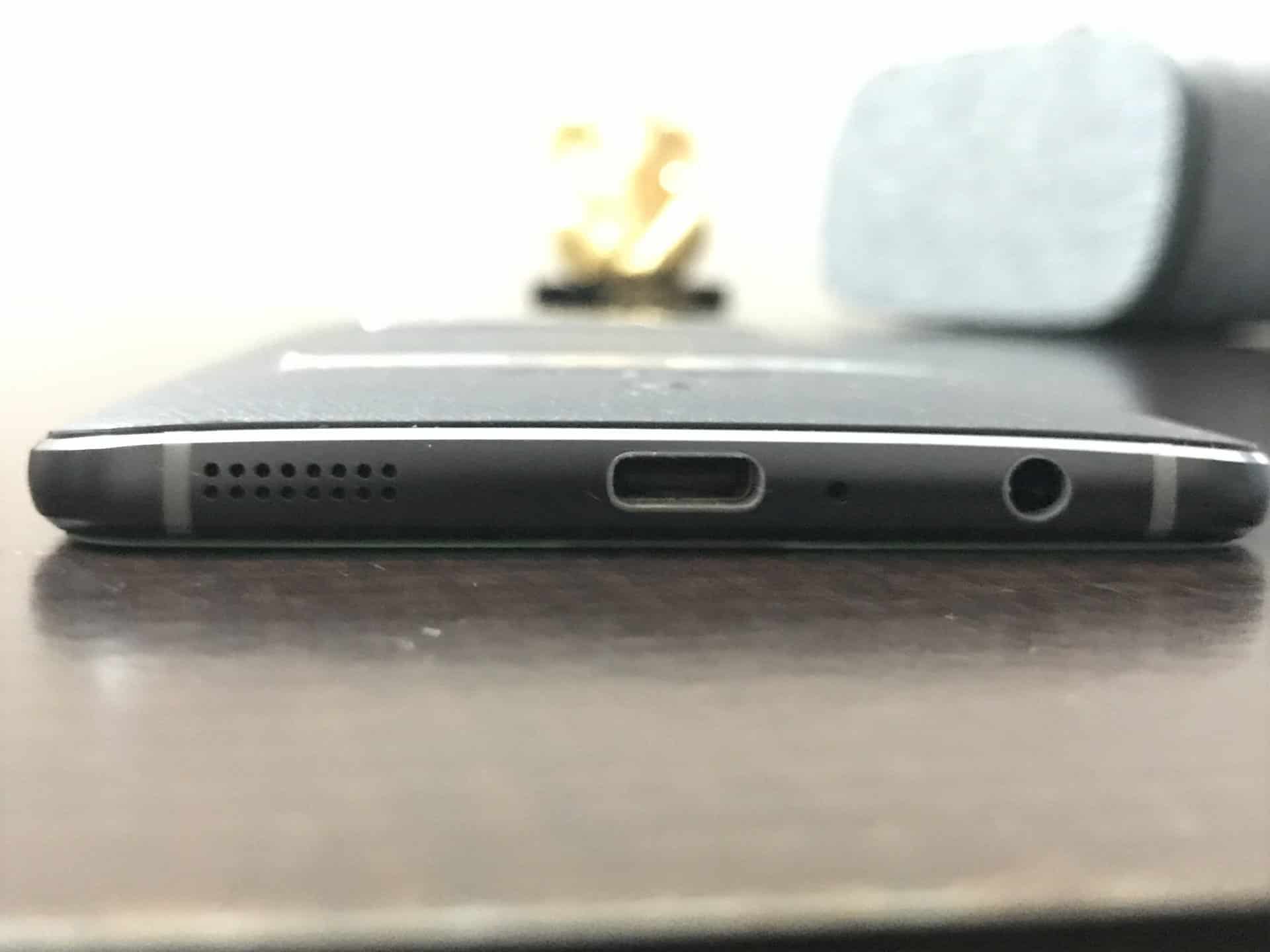 At the top and bottom, you can find the antenna bands and this phone supports 4G VOLTE. So, you can enjoy using every network SIM in this phone. It has a USB Type – C which also supports quick charge 3.0. There’s a speaker grill on the left to the USB port, and on the right, it has a 3.5mm headphone jack. Yes, we’re in 2017, and Asus is still giving preference to the headphone jack. Actually, you’ll get a ZenEar S earphones along with the phone which supports high-resolution audio.
At the top and bottom, you can find the antenna bands and this phone supports 4G VOLTE. So, you can enjoy using every network SIM in this phone. It has a USB Type – C which also supports quick charge 3.0. There’s a speaker grill on the left to the USB port, and on the right, it has a 3.5mm headphone jack. Yes, we’re in 2017, and Asus is still giving preference to the headphone jack. Actually, you’ll get a ZenEar S earphones along with the phone which supports high-resolution audio.
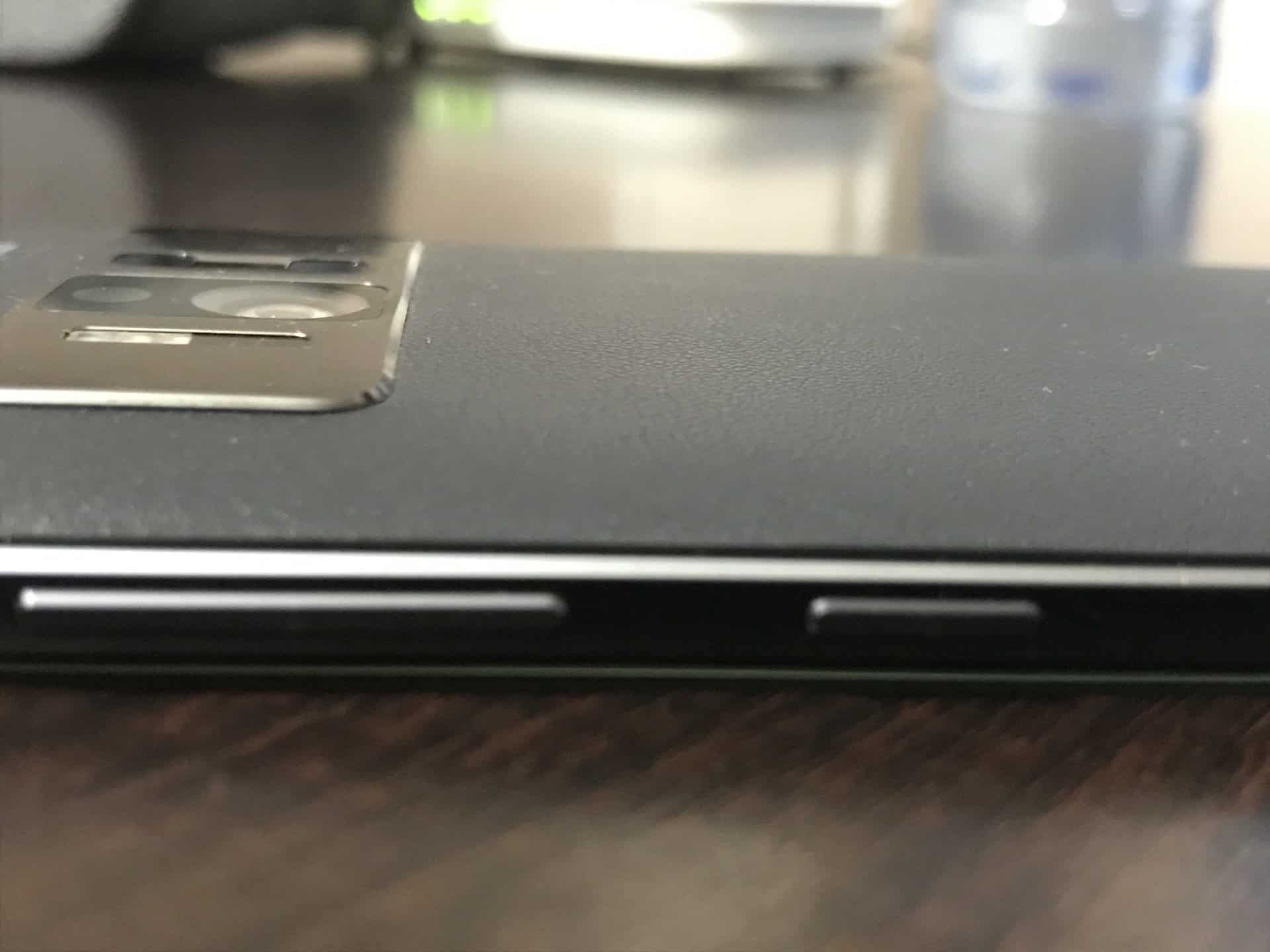 On the right side, you’ll find a volume rocker and a power button which are metallic in design and have a pattern on the buttons to make it easy when clicking in night times. On the left side of the device, there’s a hybrid SIM slot which supports two 4G nano-SIMs. You can always replace one of them with a microSD card.
On the right side, you’ll find a volume rocker and a power button which are metallic in design and have a pattern on the buttons to make it easy when clicking in night times. On the left side of the device, there’s a hybrid SIM slot which supports two 4G nano-SIMs. You can always replace one of them with a microSD card.
 The front camera is of 8MP and doesn’t have any flash to compliment it. The earpiece is same as of every other Asus smartphone, and below to that, you can find the Asus branding.
The front camera is of 8MP and doesn’t have any flash to compliment it. The earpiece is same as of every other Asus smartphone, and below to that, you can find the Asus branding.
Build Quality:
As already mentioned, the footprint of the device is very low, and the design on the rear is leather instead of glass [which every new Asus smartphone has now]. The phone looks pretty slim even with all these complex setups inside. It doesn’t qualify to be a 2017 smartphone as of top and bottom bezels, but this can’t be a drawback. Also, the 5.7′ screen is protected by Gorilla Glass 4, so there won’t be much damage even if it falls from heights. The whole phone is a unibody design made of metal, so it could withhold certain drops. In simple words, the phone looks sturdy!
Zenfone AR Review – Display:
 I would say, this is one of the first smartphones from Asus to feature a super AMOLED display. The screen size is of 5.7′ and has 2K resolution. It has a 79% screen to body ratio and is of 16:9 aspect ratio. I know this doesn’t make it 2017 smartphone, but who cares as long as the display is pitch black. Yes, I observed the same quality as of Samsung flagship phones. It does feature the always-on display function too but I find it useless as it’s not minimalistic like in other smartphones.
I would say, this is one of the first smartphones from Asus to feature a super AMOLED display. The screen size is of 5.7′ and has 2K resolution. It has a 79% screen to body ratio and is of 16:9 aspect ratio. I know this doesn’t make it 2017 smartphone, but who cares as long as the display is pitch black. Yes, I observed the same quality as of Samsung flagship phones. It does feature the always-on display function too but I find it useless as it’s not minimalistic like in other smartphones.
The color saturation is perfect.I’ve noticed extreme detail when watching HD videos. I don’t have to say more as of it is super AMOLED display. The bluelight filter is an asset, and I always turn on except while watching movies or videos. The adaptive display works pretty smooth. Unlike other smartphones, the screen lits up and dim as per the environment perfectly.
Zenfone AR Review – Camera:
The big number on the rear camera doesn’t mean it would take stunning photos right? Well, this is what everyone believes after the rants on Vivo V7+ which has a 24MP camera. But, it’s quite incorrect. The camera sensors should be properly synced with the software as to produce high-quality pictures. This can be seen in Zenfone AR as the 23MP camera and the pixelmaster software are perfectly in sync while producing full resolution photographs.
Comparing to other smartphones, the laser autofocus is an added advantage here. Though the phone has 23MP rear camera, it doesn’t come by default and you’ve set it up from the camera settings. The default would be 16MP [16:9] and you can change it to 23MP [4:3]. I’ve tried almost all the modes to assess the camera, and out of all, I liked the HDR Pro mode. The contrast and the color saturation are perfect. There’s no color drop in white, yellow, blue, green, but there’s a little bit saturation while taking objects in color red. The below are some of the camera samples I’ve taken recently using Zenfone AR.
The DoF is pretty dope. Again, it’s all about how you focus and takes the picture. Here are a few samples of flowers I’ve taken in DoF mode. You can see the colors are not tinted and came out perfectly.
Low light photography is not up to the mark. I had a huge expectation as the f/2.0 would allow more light, but all I see is noise. Though the software digitally corrects the noise, I felt the output came out lacks the detail. The exposure is quite good and I see the same quality as in Zenfone 3. I’ve also taken a few videos using Zenfone AR which you can find here. Do check out the slow-mo video I took in VR Mall, Bengaluru. The kids are kinda cute.

Optical Image Stabilization is perfect when capturing steady photos, but it’s not same as in video recording. The electronic image stabilization for shaky videos is not up to the mark, and I feel it could be better.
The 8MP selfie camera has the beautylive mode which was first introduced in Zenfone Live phone. This softens your skin, and make you look more beautiful or handsome when going live and this works real time. But the normal selfies you take requires some time to correct and adapt as per algorithms. Anyhow, I felt the selfies are not great and I somehow feel the selfies I took using Zenfone 3 are quite better than using Zenfone AR. Just check out the samples below and you be the judge.
Zenfone AR Review – Performance:
Zenfone AR has a year old flagship processor but the company promised that it’s perfectly optimized for Tango and DayDream VR. It’s actually true! I’ve noticed the same while exploring the device. The day-to-day tasks are pretty smooth, but I hated the UI. I don’t know why Asus didn’t adopt the stock UI for this project Tango phone. Also, there’s a lot of bloatware inside which can’t be uninstalled. This has been the biggest drawback in all Asus smartphones, and I hope they’ll soon realize this.
Project Tango – Augmented Reality
As already mentioned, Asus Zenfone AR is one of the first Google’s Project Tango phone and the 8GB RAM + SD 821 are perfectly complementing the rendering of simulations. There are many apps that are compatible with the Tango and I’ve used some. By default, the phone comes equipped with the apps like Measure, iStaging, visualizer, and Slingshot island. I’ve installed a few more applications like Holo, track builder for Hotwheels, etc.
The applications of Augmented Reality are quite endless, and it’s all about how we can make use of it. The rendering is perfect, and thanks to Tricam system, the phone is able to determine the position and analyze the real world objects to sense the depth. I had fun playing the Slingshot game, and several other games.
I have to say, the simulations are quite perfect. The 3D objects in iStaging are natural and you can see the same from the gallery below. In practical, there’s a lot to develop as only a few of the apps are perfectly simulated while the rest are useless.
Future Applications:
Zenfone AR has the required hardware and could simulate the 3D objects perfectly. I believe the future applications will be more of shopping-related, advertisements, and games. The war has just started, and the developers are trying to adapt this technology into several industries. So, having a phone that supports this app is a plus.
Daydream Virtual Reality
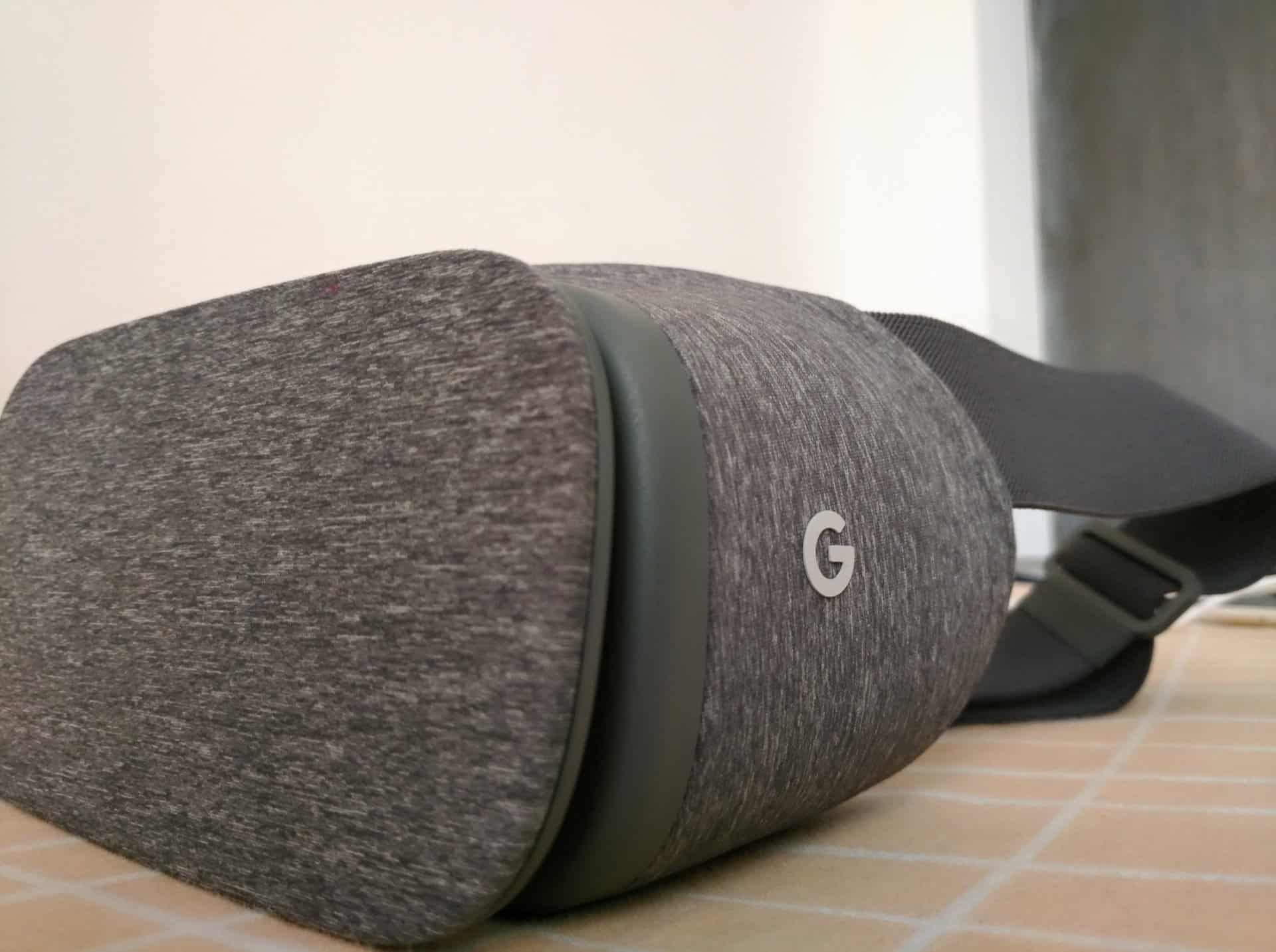 Nope, this is not the normal cardboard VR, and you can say the Daydream VR is a straight competitor to Gear VR. The difference with the cardboard VR is it has a dedicated app where you can find high-quality VR applications from the top-end developers. As usual, by default, the Zenfone AR comes with a bunch of VR apps and just like the Tango app, there’s a Daydream app where you can find high-quality apps from top developers. You can check them out in VR mode too.
Nope, this is not the normal cardboard VR, and you can say the Daydream VR is a straight competitor to Gear VR. The difference with the cardboard VR is it has a dedicated app where you can find high-quality VR applications from the top-end developers. As usual, by default, the Zenfone AR comes with a bunch of VR apps and just like the Tango app, there’s a Daydream app where you can find high-quality apps from top developers. You can check them out in VR mode too.
I’ve tried a bunch of apps on VR, and expeditions is one of my favorite apps. I always wanted to visit a mountain range and my dream came true. I know there’s a joke :P Nope, I haven’t tried it in the bathroom. Moving on, the YouTube VR is more of a theater mode, and the remote gives you pretty much control over what you want to do. There’s an app called within, and it does lives up to its name. I had this idea of being there within the movie and see the actors from the first Person PoV. Well, this app does pretty much the same. I’ve watched Mr. Robot S03 trailer, and man, what an experience. Elliot is lying on his bed and speaking, and I was able to check out the entire room. In simple, it gives you a 360-degree tour inside the video.
Future Applications:
As mentioned already, the Zenfone AR is actually a future-ready smartphone that has the required, and the developers are just started to explore the possibilities, so maybe in a year, you’ll expect more high-end apps. The Facebook Spaces is already out in beta, and there will be more social networks in future that virtually connect with our friends. Hope to see them soon.
Gaming & Performance
The Qualcomm Snapdragon 821 is the last year’s flagship chip, and of course, does a pretty neat job for gaming. The 8GB RAM and Adreno 530 adds extra power to it. I’ve not faced any lag or sluggish while playing games, and there was no delay in switching between apps. There’s nothing much I can speak about as almost all the flagships released last year were powered by SD 821.
Sound Quality
Zenfone AR does come with a headphone jack. Yes, you’ve heard that right. Along with the phone, you’ll get ZenEar S which supports DTS high-res audio. There are many modes once you can see once you pop-in the earphones. The bass is perfect and so is treble. I mostly hear the electronic music and a big fan of Daft Punk, and yeah the quality rocks.
Battery Life
The phone does come with 3300mAh battery, but it will be consumed fast once you start using any Tango app or in VR. Also, the phone heats up when you start using the VR headset and prolonging the same may have adverse effects on the battery. The phone supports quick charge 3.0, so it doesn’t take a lot of time to charge. As far my testing it only takes 90 minutes to fully juice up the battery. If not using AR & VR, the phone lives the whole day. If the software is optimized a little more, and a reduced bloatware would have dramatically improved the battery. As already mentioned, adopting the stock UI would’ve been a wise choice. Nevertheless, there’re a lot of ZenUI fans, so it’s just my opinion.
Pricing:
I would recommend you read my article on what’s stopping Asus in reaching the top position. Well, One of the reasons is their pricing. Though the Zenfone AR has the future-ready hardware, the pricing could be a little less, but the phone costs almost 50K. It could be somewhere between 35-40K which would have dramatically improved the sales.
Pros & Cons:
pros:
- Pitch-black display
- Tango (AR) & Daydream VR support
- Performance
- Future applications
- The leather casing on the rear side
- Sound modes – outdoor sound mode is dope
Cons:
- low light photography
- screen unlocking – you’ve to click the power button to make the fingerprint scanner work
- Battery life
- Heating issue
- Pricing
The Verdict:
The Zenfone AR is ideally for those who would like to explore new technologies. As explained in my review, there’s a lot of development going on in publishing high-end apps, so if you want a phone that doesn’t get outdated like iPhone, then Zenfone AR would be your only choice. Just go with it and buy from Flipkart now.



